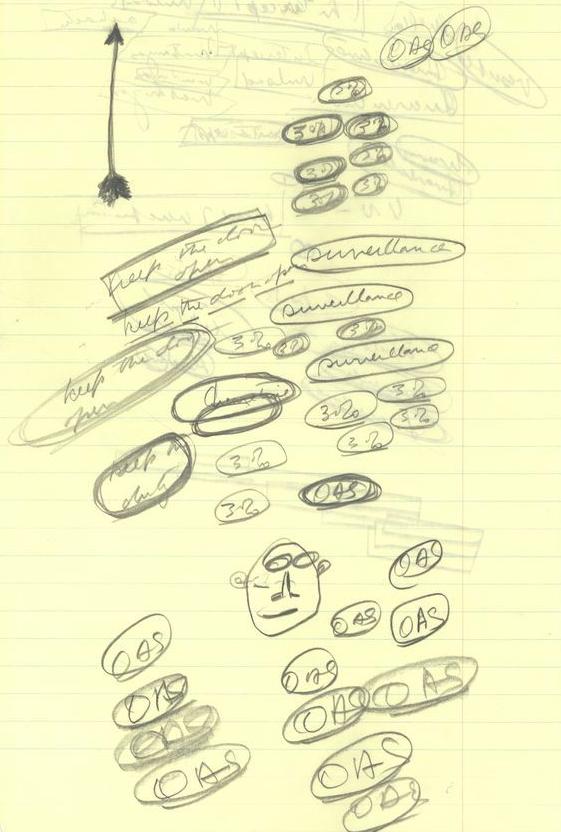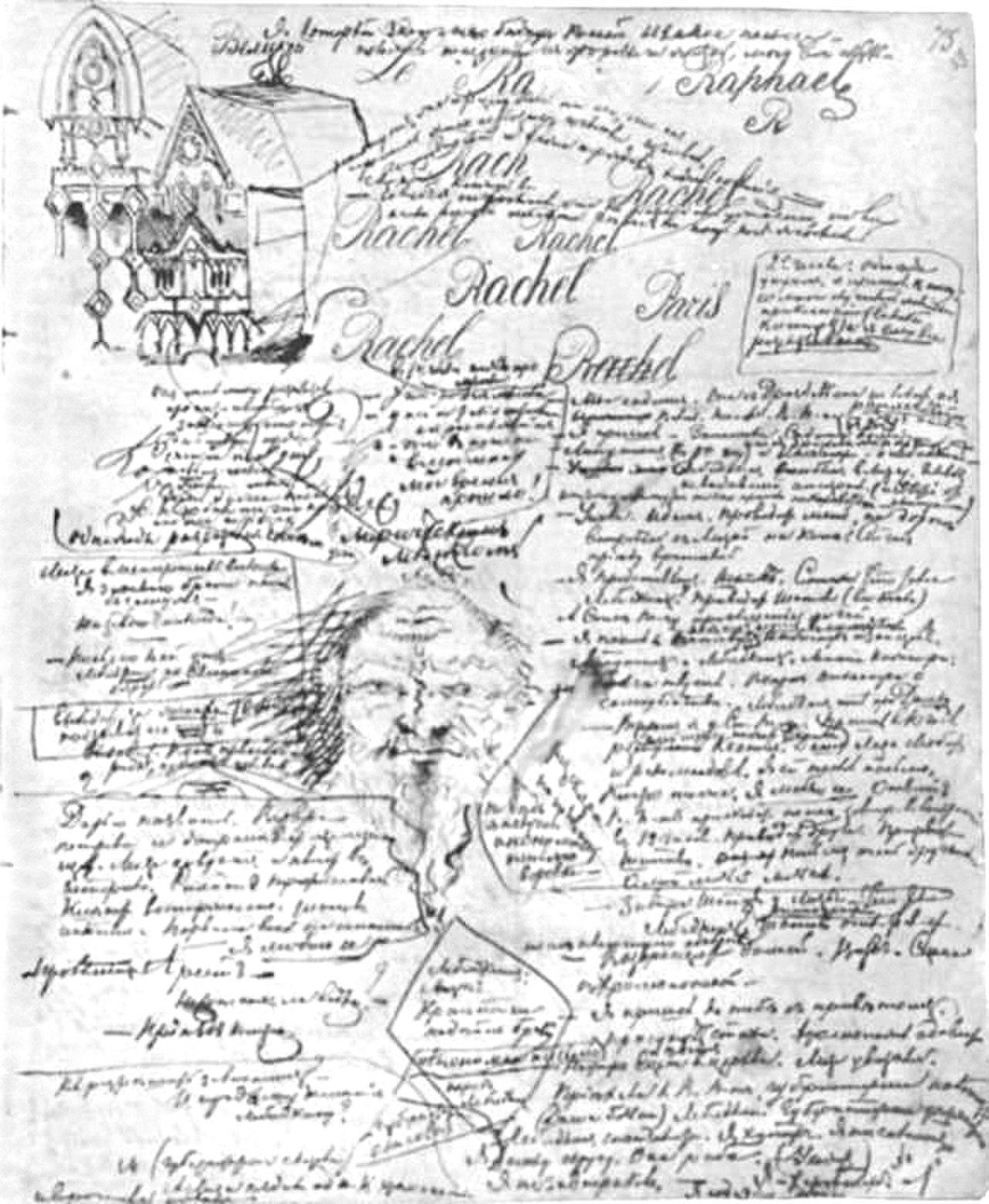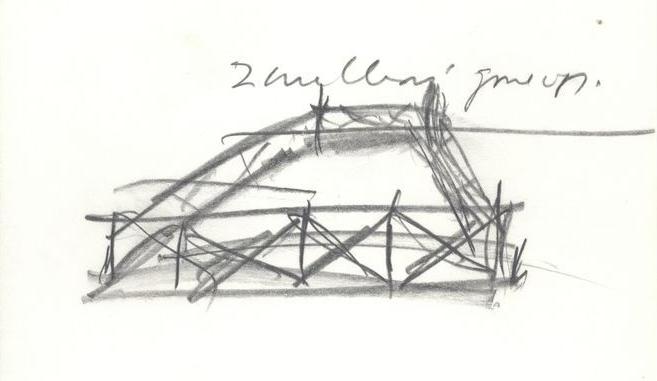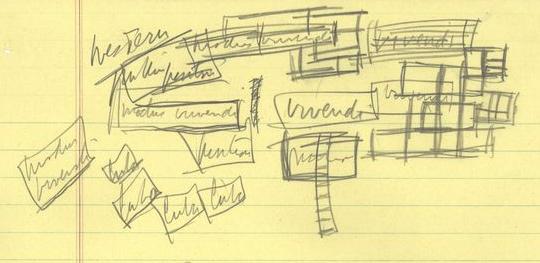Dostoevsky was a Russian writer who penned novels, essays, and short stories. Perhaps best known for Crime and Punishment, the author also doodled prolifically in his manuscripts. Scholars remain deeply fascinated with Dostoevsky’s doodles. While the sketches often appear sporadically and to be of random subject matter, some posit the doodles mirror a common feature of Dostoevsky’s narratives—polyphony, which, in literature, refers to the inclusion of several points of view and voices.
Sylvia Plath, best-known as a poet and author, not only doodled in her diaries but also created paintings and collages that displayed a keen understanding of visual media. Plath frequently cited art as her most profound source of inspiration through her life. And yet, her art has never been as popular as her writing. That said, there have been several posthumous publications of her drawings and paintings. And, in 2017, the National Portrait Gallery held an exhibition of her work entitled, One Life: Sylvia Plath.
































